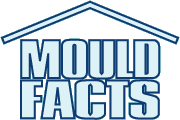Mold And Bacteria In A School
Question: I am an employee of a school that has numerous mold/bacteria issues due to water issues (pipes breaking on 4 separate occasions, as well as storm related water and roof damage when it was being constructed approximately 14 years ago. In addition to this, there have been known MAJOR HVAC issues and problems since the school was built. I as well as many others, have been battling numerous, ongoing health issues over the past 8-14 years while working in this building. An outside consulting company was finally hired (once again, due to many staff complaints) and the results are in, indicating NUMEROUS and various molds from Class A through Class C in our building. ie...Aspergillus fumigatus 4,500 CFU,
Aspergillus versicolor 15,000 CFU,
Penicillium spp 280,000 CFU,
Penicillium sp 670 CFU,
Fusarium graminearum 15,000 CFU,
Fusarium solani 9,000 CFU,
Chaetomium globosum 15,000 CFU,
Cladosporium 190,000 CFU,
Yeasts 330,000 CFU,
Rhodotorula glutinis 130,000 CFU.
The above testing was done with a dilution factor of 1000X. I have listed only 1/4 of the molds as I have yet to research the others on the list! Proper abatement guideline procedures were also not followed after each water issue and with the last water break they had working going on when we were all in the building!
As a 'lay person' your website has given me very wonderful and helpful information with regard to the numerous molds found in our building. I am glad to FINALLY understand what I know is the source of my many health issues. Given the information I have been reading, aren't the numerous types as well as the numbers above alarming? Or am I over-reacting? Should this building even be occupied? Would OSHA be the next step for me to attempt to bring awareness and get resolve? Please respond at your earliest convenience. Thanks in advance for your time :)
Answer: It's difficult for us comment without additional information on what type of samples were analyzed, how the samples were collected and the method that was used to analyze the samples.
If the samples that were analyzed were either swabs or bulk material, the numbers in the results can be very misleading and could even exaggerate the situation thus causing panic for nothing. If you could provide the complete report (without the name of your school and the company that did the testing and their addresses), we could possibly help you understand the report.
When it comes to indoor mould, it's not the numbers that you see in the report that matters (especially if these numbers are derived from bulk or swab samples!). What matters is the type of mould, the amount of mould one inhales, their body resistance and other unknown factors.
Dr. Jackson Kung'u, PhD.
Mold & Bacteria Consulting Laboratories (MBL) Inc.
Aspergillus versicolor 15,000 CFU,
Penicillium spp 280,000 CFU,
Penicillium sp 670 CFU,
Fusarium graminearum 15,000 CFU,
Fusarium solani 9,000 CFU,
Chaetomium globosum 15,000 CFU,
Cladosporium 190,000 CFU,
Yeasts 330,000 CFU,
Rhodotorula glutinis 130,000 CFU.
The above testing was done with a dilution factor of 1000X. I have listed only 1/4 of the molds as I have yet to research the others on the list! Proper abatement guideline procedures were also not followed after each water issue and with the last water break they had working going on when we were all in the building!
As a 'lay person' your website has given me very wonderful and helpful information with regard to the numerous molds found in our building. I am glad to FINALLY understand what I know is the source of my many health issues. Given the information I have been reading, aren't the numerous types as well as the numbers above alarming? Or am I over-reacting? Should this building even be occupied? Would OSHA be the next step for me to attempt to bring awareness and get resolve? Please respond at your earliest convenience. Thanks in advance for your time :)
Answer: It's difficult for us comment without additional information on what type of samples were analyzed, how the samples were collected and the method that was used to analyze the samples.
If the samples that were analyzed were either swabs or bulk material, the numbers in the results can be very misleading and could even exaggerate the situation thus causing panic for nothing. If you could provide the complete report (without the name of your school and the company that did the testing and their addresses), we could possibly help you understand the report.
When it comes to indoor mould, it's not the numbers that you see in the report that matters (especially if these numbers are derived from bulk or swab samples!). What matters is the type of mould, the amount of mould one inhales, their body resistance and other unknown factors.
Dr. Jackson Kung'u, PhD.
Mold & Bacteria Consulting Laboratories (MBL) Inc.


